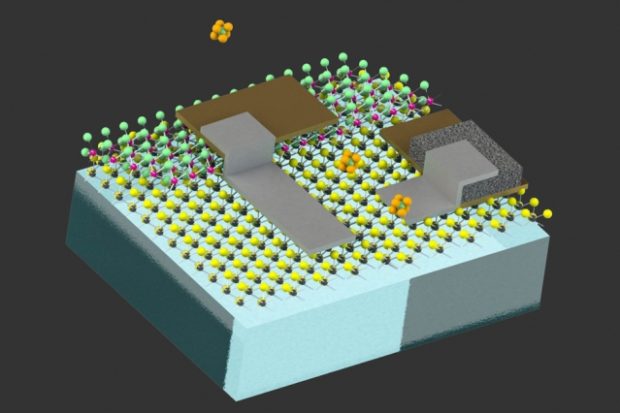
This diagram illustrates the design of the tiny devices, which are designed to be able to float freely in liquid or air. Image: Massachusetts Institute of Technology
Scientists found a way to create robots as small as a human egg cell to help in monitoring hard-to-reach environments.
Researchers from the Massachusetts Institute of Technology found a way to add miniature circuitry on tiny particles called colloids, which are so small they can keep floating in air or water indefinitely, according to a statement.
The study, led by Volodymyr Koman, has been published in the scientific journal Nature Nanotechnology.
These tiny robots will have just enough circuitry and storage capacity to act as monitoring systems. They could be scattered to monitor pipelines or even to be injected into the human body for diagnostic purposes.
The robots will be self-powered through a simple photodiode which turns light into an electrical current. No batteries are necessary. The photodiode will provide the small bit of electricity the robots will need to keep functioning. After completing their mission, the data stored in the robots’ memory could be retrieved for analysis.
The team hopes to further develop the technology to allow the tiny robots to communicate wirelessly. NVG
RELATED STORIES:
British car firm to develop robotic repair ‘cockroach’
NASA sending robotic geologist to Mars to dig super deep
Put the toolbox away – new robot assembles IKEA chairs